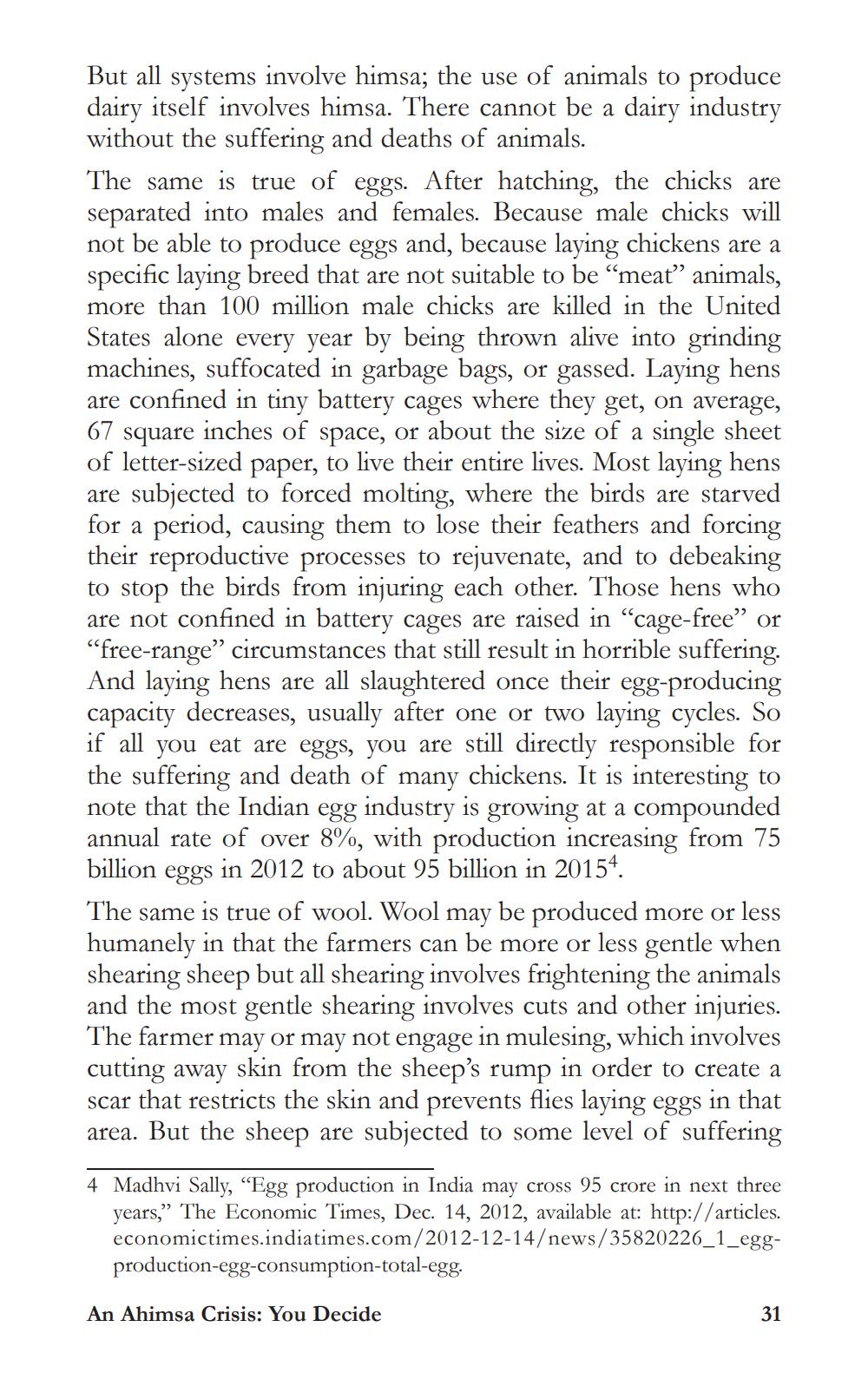________________
But all systems involve himsa; the use of animals to produce dairy itself involves himsa. There cannot be a dairy industry without the suffering and deaths of animals. The same is true of eggs. After hatching, the chicks are separated into males and females. Because male chicks will not be able to produce eggs and, because laying chickens are a specific laying breed that are not suitable to be “meat” animals, more than 100 million male chicks are killed in the United States alone every year by being thrown alive into grinding machines, suffocated in garbage bags, or gassed. Laying hens are confined in tiny battery cages where they get, on average, 67 square inches of space, or about the size of a single sheet of letter-sized paper, to live their entire lives. Most laying hens are subjected to forced molting, where the birds are starved for a period, causing them to lose their feathers and forcing their reproductive processes to rejuvenate, and to debeaking to stop the birds from injuring each other. Those hens who are not confined in battery cages are raised in “cage-free” or “free-range” circumstances that still result in horrible suffering. And laying hens are all slaughtered once their egg-producing capacity decreases, usually after one or two laying cycles. So if all you eat are eggs, you are still directly responsible for the suffering and death of many chickens. It is interesting to note that the Indian egg industry is growing at a compounded annual rate of over 8%, with production increasing from 75 billion eggs in 2012 to about 95 billion in 20154. The same is true of wool. Wool may be produced more or less humanely in that the farmers can be more or less gentle when shearing sheep but all shearing involves frightening the animals and the most gentle shearing involves cuts and other injuries. The farmer may or may not engage in mulesing, which involves cutting away skin from the sheep's rump in order to create a scar that restricts the skin and prevents flies laying eggs in that area. But the sheep are subjected to some level of suffering
4 Madhvi Sally, “Egg production in India may cross 95 crore in next three
years," The Economic Times, Dec. 14, 2012, available at: http://articles. economictimes.indiatimes.com/2012-12-14/news/35820226_1_eggproduction-egg-consumption-total-egg.
An Ahimsa Crisis: You Decide
31




